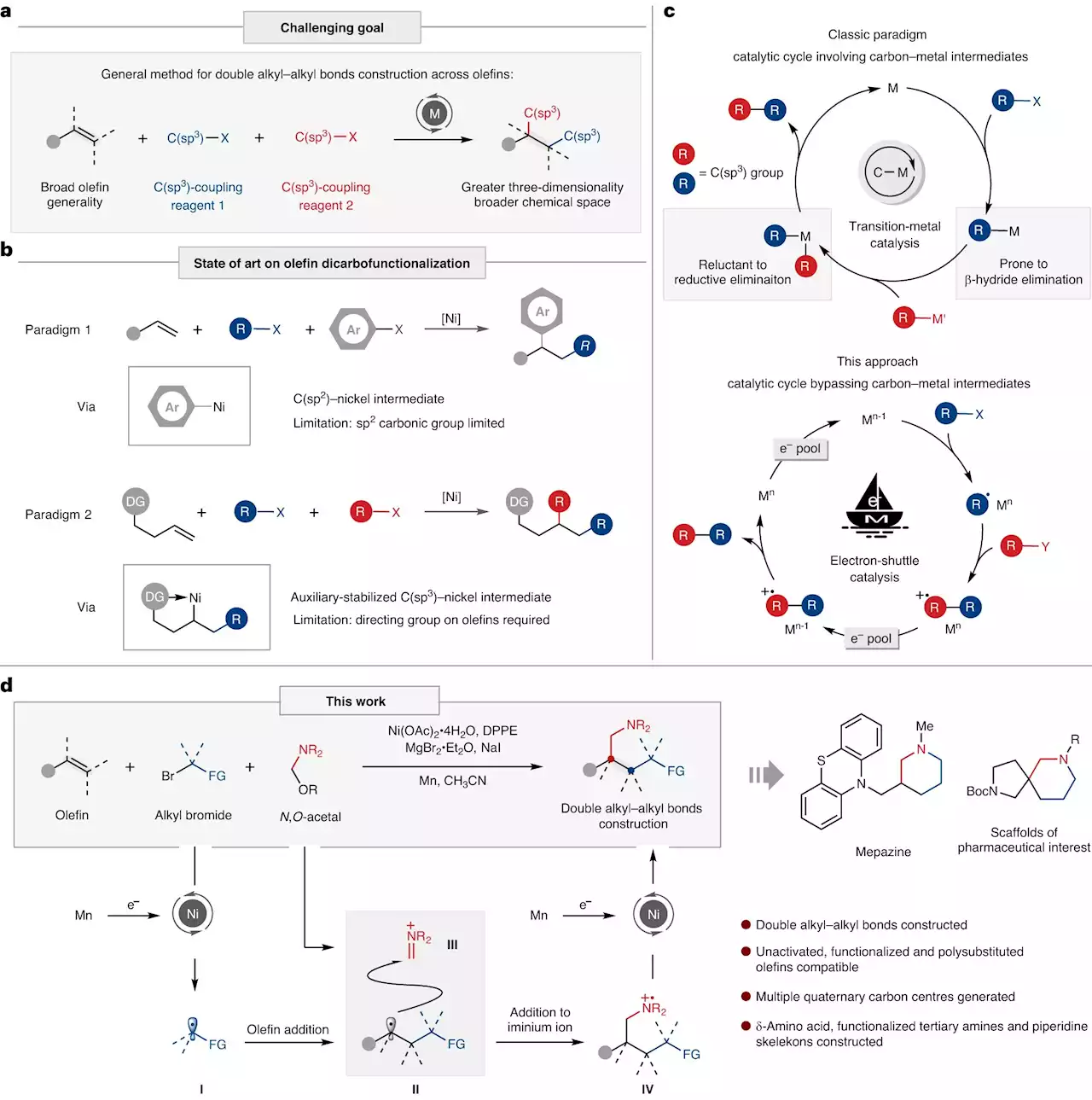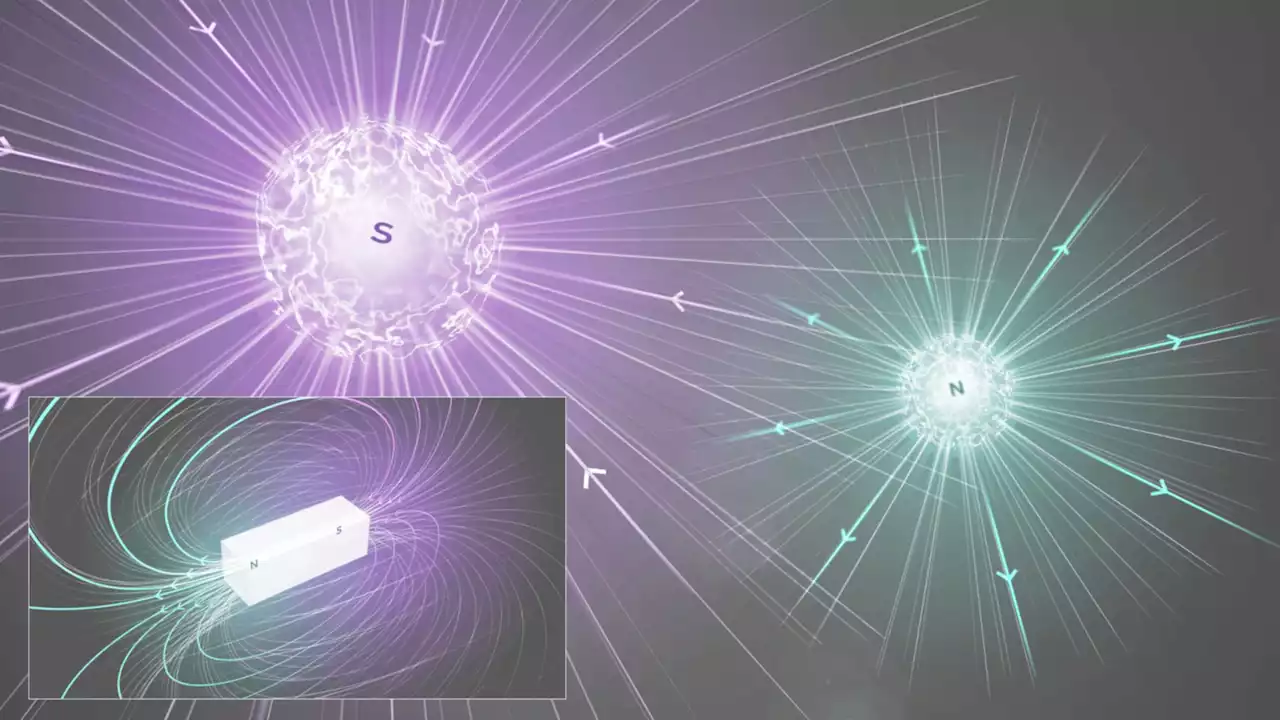Blue light is vital for light-emitting devices, lighting applications, as well as smartphone screens and large screen displays. However, it is challenging to develop efficient blue organic light-emitting diodes (OLEDs), owing to the high applied voltage required for their function. Conventional blue OLEDs typically require around 4 V for a luminance of 100 cd/m2. This is higher than the industrial target of 3.7 V—the voltage of lithium-ion batteries commonly used in smartphones. Therefore, there is an urgent need to develop novel blue OLEDs that can operate at lower voltages.
The choice of materials used in this OLED significantly influences its turn-on voltage. The device utilizes NDI-HF benzo[lmn][3,8]-phenanthroline-1,3,6,8-tetraone) as the acceptor, 1,2-ADN -10-anthracene) as the donor, and TbPe as the fluorescent dopant. This OLED operates via a mechanism called upconversion . Herein, holes and electrons are injected into donor and acceptor layers, respectively. They recombine at the donor/acceptor interface to form a charge transfer state.
An upconversion organic light-emitting diode based on a typical blue-fluorescence emitter achieves emission at an ultralow turn-on voltage of 1.47 V, as demonstrated by researchers from Tokyo Tech. Their technology circumvents the traditional high voltage requirement for blue OLEDs, leading to potential advancements in commercial smartphone and large screen displays.
Subsequently, the energy of the CT state is selectively transferred to the low-energy first triplet excited states of the emitter, which results inemission through the formation of a high-energy first singlet excited state by triplet-triplet annihilation . "As the energy of the CT state is much lower than the emitter's bandgap energy, the UC mechanism with TTA significantly decreases the, equivalent to that of a commercial display, at just 1.97 V," explains Dr. Izawa.
In effect, this study efficiently produces a novel OLED, with blue light emission at an ultralow turn-on voltage, using a typical fluorescent emitter widely utilized in commercial displays, thus marking a significant step toward meeting the commercial requirements for blue OLEDs.
Malaysia Latest News, Malaysia Headlines
Similar News:You can also read news stories similar to this one that we have collected from other news sources.
 Researchers propose novel paradigm of metal electron-shuttle catalysisProfessor Huang Hanmin's research team from the University of Science and Technology of China (USTC) of the Chinese Academy of Sciences (CAS) proposed a new paradigm of metal electron-shuttle catalysis, which has been pioneeringly employed to achieve alkylative aminomethylation of unactivated alkene for the first time. Their work was published in Nature Catalysis on August 21.
Researchers propose novel paradigm of metal electron-shuttle catalysisProfessor Huang Hanmin's research team from the University of Science and Technology of China (USTC) of the Chinese Academy of Sciences (CAS) proposed a new paradigm of metal electron-shuttle catalysis, which has been pioneeringly employed to achieve alkylative aminomethylation of unactivated alkene for the first time. Their work was published in Nature Catalysis on August 21.
Read more »
 The real impact of blue light on eye health and sleepBlue light blocking glasses are marketed as a solution for eye strain and sleep disruptions caused by screen time, but how much of this is true?
The real impact of blue light on eye health and sleepBlue light blocking glasses are marketed as a solution for eye strain and sleep disruptions caused by screen time, but how much of this is true?
Read more »
 A mysterious blue molecule will help make better use of light energyResearchers at IOCB Prague are the first to describe the causes of the behavior of one of the fundamental aromatic molecules, which fascinates the scientific world not only with its blue color but also with other unusual properties—azulene. Their current undertaking will influence the foundations of organic chemistry in the years to come and in practice will help harness the maximum potential of captured light energy. Their article appears in the Journal of the American Chemical Society (JACS).
A mysterious blue molecule will help make better use of light energyResearchers at IOCB Prague are the first to describe the causes of the behavior of one of the fundamental aromatic molecules, which fascinates the scientific world not only with its blue color but also with other unusual properties—azulene. Their current undertaking will influence the foundations of organic chemistry in the years to come and in practice will help harness the maximum potential of captured light energy. Their article appears in the Journal of the American Chemical Society (JACS).
Read more »
 CERN researchers continue to look for elusive monopolesMagnetic monopoles are consistent with quantum mechanics and are called 'as one of the safest bets that one can make about physics not yet seen.”
CERN researchers continue to look for elusive monopolesMagnetic monopoles are consistent with quantum mechanics and are called 'as one of the safest bets that one can make about physics not yet seen.”
Read more »
 In major breakthrough, researchers close in on potential preeclampsia cureResearchers have achieved a significant breakthrough in identifying the primary cause and potential treatment for preeclampsia, a severe pregnancy complication. Experts pinpointed a toxic protein named cis P-tau in the blood and placenta of individuals with preeclampsia. The study describes cis P-tau as a pivotal circulating instigator of preeclampsia. An antibody developed in 2012 to target only the toxic protein while leaving its healthy counterpart unscathed is currently undergoing clinical trials in human patients suffering from traumatic brain injury and Alzheimer's Disease. The antibody has shown promising results in animal models and human cell cultures in treating the brain conditions. Upon testing this antibody in mice, the researchers found the all symptoms associated with preeclampsia were corrected.
In major breakthrough, researchers close in on potential preeclampsia cureResearchers have achieved a significant breakthrough in identifying the primary cause and potential treatment for preeclampsia, a severe pregnancy complication. Experts pinpointed a toxic protein named cis P-tau in the blood and placenta of individuals with preeclampsia. The study describes cis P-tau as a pivotal circulating instigator of preeclampsia. An antibody developed in 2012 to target only the toxic protein while leaving its healthy counterpart unscathed is currently undergoing clinical trials in human patients suffering from traumatic brain injury and Alzheimer's Disease. The antibody has shown promising results in animal models and human cell cultures in treating the brain conditions. Upon testing this antibody in mice, the researchers found the all symptoms associated with preeclampsia were corrected.
Read more »
 Researchers uncover unconventional charge carriers in a triangular-lattice Mott insulatorMott insulators are a peculiar class of materials with structures that should theoretically conduct electricity, but that are instead insulators. These materials contain strongly correlated electrons, which can generate highly entangled many-body states marked by unconventional excitations.
Researchers uncover unconventional charge carriers in a triangular-lattice Mott insulatorMott insulators are a peculiar class of materials with structures that should theoretically conduct electricity, but that are instead insulators. These materials contain strongly correlated electrons, which can generate highly entangled many-body states marked by unconventional excitations.
Read more »
